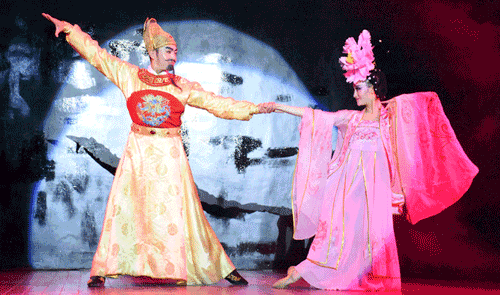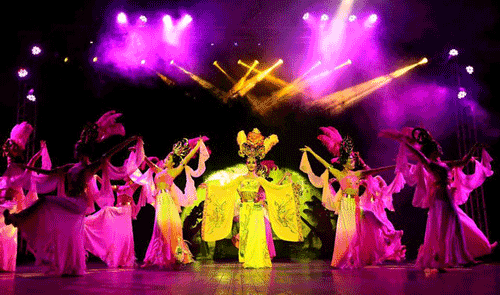Artistry in Motion
By Afsheen Ahmed | Newsliners | Published 7 years ago
 It was a magical evening. The music, the colours of the costumes, the exotic and beautiful headgear, more stunning than the flowing costumes, the instrumentals and the songs, all combined to transport the audience to a different time and place and culture: The Tang Dynasty, which reigned supreme from the 7th to the 10th century in China.
It was a magical evening. The music, the colours of the costumes, the exotic and beautiful headgear, more stunning than the flowing costumes, the instrumentals and the songs, all combined to transport the audience to a different time and place and culture: The Tang Dynasty, which reigned supreme from the 7th to the 10th century in China.
The impetus to host such an event in Karachi was the two-day (April 23-24) China-Pakistan Economic Corridor (CPEC) summit organised by the Dawn Media Group, in collaboration with the Ministry of Planning, Development and Reform, to educate the public about the objectives of CPEC and its umbrella project, the Belt and Road Initiative.
The link of the Tang Dynasty to CPEC is interesting. According to the Chinese Ambassador to Pakistan, Yao Xing, “At the time, China was one of the most prosperous and powerful nations in the world with …diplomatic relations with more than 300 states” and during which time the historic Silk Road was reopened. Nearly 11 centuries later, China is attempting to “rejuvenate this spirit through the Belt and Road Initiative…CPEC is the frontrunner of this initiative and the most result-oriented project.”
The CPEC summit was launched in style with Tang Dynasty Songs and Dances (Impressions of the Tang Dynasty); The Spirit of the New Silk Road, at the Arts Council (April 22-24). The 25-member troupe, comprising male and female dancers, instrumentalists and singers, enthralled the audience in a one-hour performance comprising 11 items. While the Feather Dress Dance — The Dance of the Fairies performance was, hands down, simply incandescent, the other items were also riveting. Interestingly, two of the performances were single gender only — The Women of Xi Fu and The Men of Guan Zhong. The performance culminated with the Shaanxi Drum Dance, where the whole troupe came onstage carrying small drums and sticks, along with the resplendent Emperor and Empress.
Graceful, delicate and flexible, the female dancers glided and moved like water. And the male dancers in the first set — The Flourishing Age of the Tang Dynasty — dressed to resemble the statues of the soldiers found in the rediscovered Tang tombs, seemed completely immobile. It was an impressive start.
Why the depiction of a long-forgotten imperial power by a Communist country, one might ask? And the Tang Dynasty in particular? For starters, the Tang Dynasty is seen as the golden age of just and effective government, cultural sophistication and imperial greatness.
And therein, perhaps, lies the answer to the question: China has made astonishing economic and technological progress in a relatively short time span. Parallels can be drawn between the Tang dynasty and modern day China. The music and dance is the softer face of an emerging global superpower.


